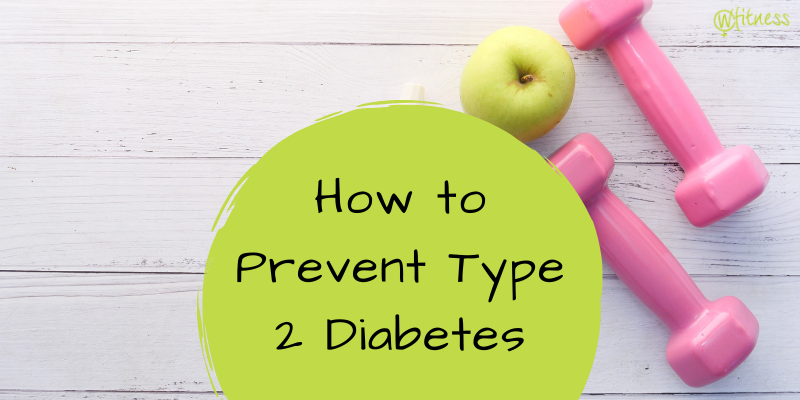Diabetes is a serious disease that occurs when your blood sugar (blood glucose) is too high and your muscle cells do not respond well to insulin, meaning that blood sugar cannot enter these cells (where they are stored for energy) and therefore build up. Sugar alone does not cause diabetes although it’s easy to think that as it occurs when blood sugar levels are too high. Being overweight is a major reason for diabetes and as sugary foods are high calorie, they can cause weight gain. Cutting down on sugar is important but it is not necessary to eliminate it completely. People with diabetes are more at risk of heart disease and strokes. It is much better to take steps now to prevent this happening.
Although Type 2 diabetes is more common in people over the age of 45, it can occur at any age. One in ten people over the age of 40 are living with type 2 diabetes in the UK. That is a scary statistic, isn’t it? You are more likely to develop diabetes if you are overweight or if it runs in the family. High blood pressure, race and lack of physical activity can be other causes.
The food choices that you make can greatly increase your risk of diabetes. Try to limit highly processed carbohydrates such as white rice and pasta, white bread and flour, sweets, chocolate, pizza and high sugar breakfast cereals which can cause blood sugar spikes after eating and eat a healthy diet rich in whole foods such as meat, fish, fruit, vegetables, nuts and eggs, which supply more nutrition per calorie than processed carbohydrates. An occasional treat is fine as long as it doesn’t become a daily occurrence.
We consume far too much sugar as a nation, mainly due to the fast-food culture, junk food being cheap and the vast array of sweets and treats available. It is mainly free sugars (sugar that we add to food, as well as syrups, honey and fruit juice, rather than the naturally occurring sugars in fruit and dairy) that is the main concern. The maximum recommended amount of sugar that a woman should have in a day is 25g or 6 teaspoons. When you realise that a chocolate digestive contains 4.8g of sugar, a serving of tomato ketchup (15g) contains 3.4g of sugar and half a tin of baked beans contains 9.8g of sugar, you can see that it doesn’t take a lot for the grams of sugar to mount up, and you are probably consuming more than the daily limit without even realising.
It is quite easy to cut down on sugar – you don’t need to cut it out altogether. Sugar is found naturally in fruit and vegetables which are really good for us and we need to make sure that we are getting the recommended daily amount of these. It is better to eat fruit in its natural state rather than blending into a juice or a smoothie as it takes longer for your body to absorb the sugar when eaten whole.
How can we cut down on the amount of sugar we eat?
- Replace chocolate, biscuits and cakes with nuts, Greek yogurt with a little fruit and/or nuts, cucumber and carrot with hummus, guacamole or salsa, or peanut butter with celery.
- Drink water instead of high sugar fizzy drinks. Add slices of lemon and lime in you prefer some flavour.
- Make your own meals from scratch and try not adding the sugar – usually you won’t be able to taste the difference and, if you can, you can reduce the amount of sugar that is added.
- Replace red and processed meats with chicken and fish.
- Eat plenty of vegetables, raw or cooked. Try low-carb vegetables such as mushrooms, brussels sprouts, and tomatoes. They are very tasty when roasted with different herbs and spices.
- Add kale and spinach to salads. Kale makes a lovely crunchy snack when roasted with a little salt and olive oil.
- When eating fruit, choose low carb varieties such as berries and melon.
- Include healthy fats in your diet such as olive oil, avocado and fatty fish such as salmon. Salmon with a salad is a perfect summer evening meal.
- Be careful when choosing low fat options as quite often, the fat that is taken out is replaced with sugar and can make what seems like a healthy choice not very healthy at all.
- Get used to looking at labels when buying sauces, yogurts, tins etc to make sure that they are not high in sugar. You will soon get used to which ones are healthy.
- Become familiar with words such as fructose, glucose, glucose syrup and sucrose, all of which are free sugars and if this is in the ingredients, then it has sugar in it.
- As a general rule, if sugar is within the first three ingredients on a food label, then it is high in sugar.
What else can we do?
The World Health Organisation (WHO) has said that 30 minutes of exercise along with a healthy diet can prevent diabetes! This is because exercise boosts your cells’ sensitivity to insulin, meaning that when you exercise, less insulin is needed to keep your blood sugar levels in check.
This can be any exercise, cardio, resistance training, strength training or swimming.
We offer a 30-minute circuit made up of hydraulic resistance machines which, when used regularly, will help to reduce the risk of diabetes.
So, these are two things that we can all do to help prevent the risk of diabetes. We need to eat a healthy diet and complete 30 minutes of exercise most days of the week. Let’s leave the sedentary lifestyle behind and get moving!
Much Love
Caroline & Hannah xx
